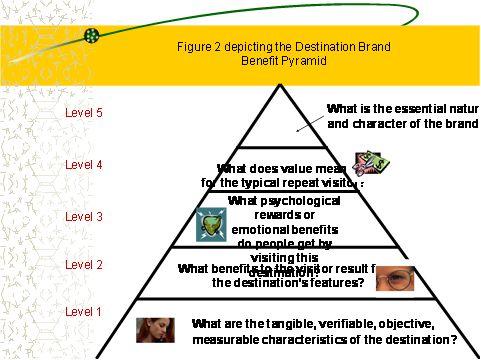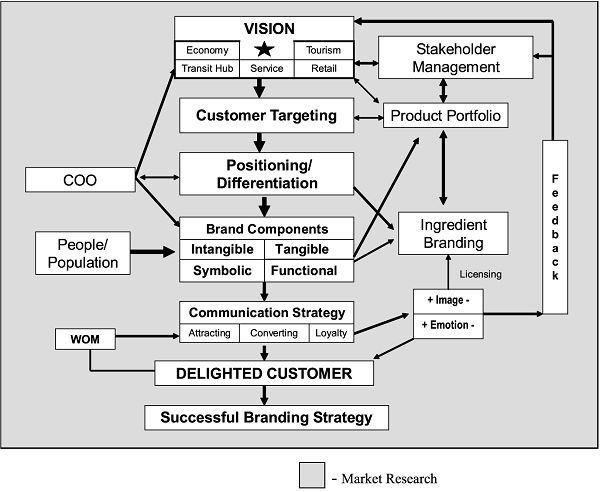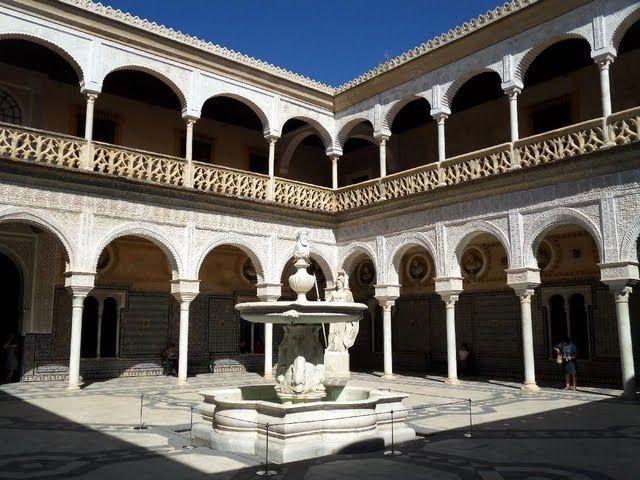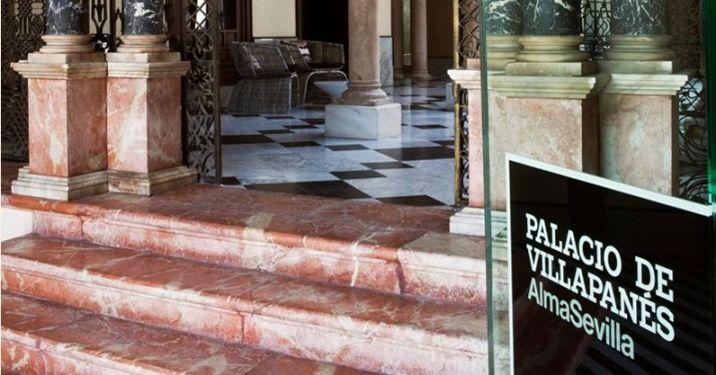Introduction
Though some tourist destinations have thrived in the 21st century without creating business strategies or innovating, this case study asserts that many more have taken a beating, and the fiscal crises that have continued to strike many business sectors increase the odds in such a way that the effects of the existing recession will be felt over the long term. This has in return tasked managements with identifying best strategies to address their reducing share markets and conform to the most recent factual business imperative that states that ‘innovate or evaporate’.
Reflecting on the above, the author established that the usefulness of tourism and the increased entry of new destination markets have forced all destinations to compete by emulating at global levels to win on the lucrative shares of tourist markets (Hassan et al. 2010, p.142). In his research work, Balakrishnan (2009 p.78) established that “travel and tourism were the second largest global industries with daily revenues of US$2 billion. This was supplemented by investments of about 12% of world GDP”.
To add, close to 12% of the world population has been flying globally in search of tourism leisure and ventures. The preceding assertions evidence the fact that lately, the key term that has elicited keen interests in many economic planners is ‘destination branding’. Destination branding was defined by Cai (2002) as “selecting a consistent brand element mix to identify and distinguish a destination through positive image building”. It has been recently adopted as perhaps the most powerful and the best marketing weapon readily available to most contemporary destination planners and marketers.
The increased interest in destination branding has led to many cities investing large portions of their money resources to derive valuable brand assets (Lee & Fayrene 2011). For instance, in the year 2006 alone, 194 nations, amongst them world economic powers such as the USA, China, India, Germany, UK, Australia, UAE , Spain and some others, were known to have clamoured for the share of the tourist’s heart, mind and wallet. This led to the unplanned spending of a whooping US$ 1,480 billion on destination branding in the same year (Balakrishnan 2008). In a nutshell, to date, few success stories exist in the destination branding strategies despite the increased level of interest in the topic in the 21st century (Moilanen & Rainisto 2009, p.5).
Having familiarised with the above theoretical frameworks and also having paid a residential visit to 2 destinations that presented examples of success stories in destination branding, the author saw it worthwhile to reflect on some of the key aspects that were implemented by one of these destinations (read Seville). As such, the author chose to reflect on the aspects that were adopted and implemented by the Spanish authorities in branding Seville as a key tourist and event destination.
Notably, as previously highlighted, having established from previous research works that the path to successful destination branding is endowed with abundant challenges that present destination steering teams with difficult marketing adventures, the researcher deemed it worthy to recommend a number of key factors in the study’s initial stage. They were later on correlated to Seville’s branding strategy.
This case study has, therefore, both managerial and academic significance and justification. This is so because study is relevant in equipping the learner with a number of learning outcomes that depict factors necessary for establishing successful destination branding strategies. These can be practically applied in real world contexts by planners or steering teams for maximization of destination returns.
The case study initiated a review of the literature on this ‘hottest’ topic. The literature review led to the identification of the general competitive destination frameworks considered in the branding of destinations. These were later on followed by a linkage of how Seville implemented these identified frameworks in facilitating its worldwide tourism prominence.
In the succeeding sections, this case study made reference to Seville’s branding strategy. Moreover, the study selected AlmaSevilla hotel as a hospitable case study and reviewed how its services were compatible with Seville’s branding strategy. Lastly, the examination of the trends, issues and challenges facing Seville’s selected sectors of economy were studied in the final phase.
Recommended competitive destination frameworks
Baker (2007), while studying on some of the successful factors that smaller cities needed to implement to achieve successful destination branding, came to the conclusion that one thing is for sure: “there is no ‘silver bullet’ or one-size-fits-all solution that will quickly deliver a sustainable brand strategy”. He went ahead to defend this assertion by stating that while there existed a number of generic brand planning stages for service and consumer brands, all had key characteristics of containing the following steps (which also topped-up as the key factors for consideration).
- Assessing or analyzing the situation (O’Toole 2011, p. 67);
- Defining the brand;
- Communication the brand;
- Managing the brand
However, the author established that Baker (2007, p.64) and Matthew’s (2007, p.84) works were also efficient in addressing how individual elements in the formulation of brand strategies varied with respect to budget availability, city’s size, development stage, sophistication of the market, economic base complexity and accuracy of external markets as well as existing city image. These efficiencies will be critically analyzed with reference to Seville’s situation.
On the other hand, Morrison and Anderson (2002) were of the view that the following factors formed 5 phases of destination branding:
- Market investigation and its analysis plus its strategic recommendation
- Development of the brand identity
- Launch and communication of the brand vision
- Implementation of the brand
- Monitoring and evaluating of the brand.

Moreover, the components were summarized by Balakrishnan (2009) as shown below:

The strategies implemented by Seville in facilitating a prominent position in worldwide tourism
Before going ahead to articulate the competitive frameworks that were implemented by Seville, the author noted that the branding of this city did not only transform the environment of the city but also Spain from being a poor European backwater country (SNV Netherlands Development Organisation 2009, p.51). As such, Spain is now a modern and civilized country.
The strategies that were implemented by Seville were revealed by reviewing the observations that people had accustomed themselves to about this historic, artistic, financial and cultural capital of Southern Spain. As such, the author clearly identified these strategies as involving or originating from the use of the physical elements or the pull factors, planned marketing communication, internet forums, networking or the oral communication as advanced by media and the networked friends, the reviewing and the upgrading of the existing tourism infrastructure within Seville (Moilanen & Rainisto 2009, p.14).
Physical elements/pull factors
To start with, deriving from Morisson and Anderson (2002) study, this case study established that Seville authorities made a strategic recommendation- which is one of the key competitive strategies for rebranding. This was so when they strategically established the city as a provincial capital. Due to its elevated status, the city got reserved seats in the Spanish parliament -commonly called The Comunidad Autónoma de Andalucía. These events led to the city gaining better share in the distribution of the country’s natural resources. A lot of capital was directed towards upgrading its existing tourism potentials hence facilitating its destination branding.
Environmental issues
The development of Spain and Sevilles’ tourism industry as a major source of foreign exchange earner assisted in the establishing of the city as a major brand destination. A study by Dunn (1999, p.17) justified this assertion when it documented that the branding of Seville as a major source of foreign exchange earner had forced the Spanish authorities to carry out constant upgrading of its infrastructure. This was intended to meet the city’s increasing tourist and local needs.
This study went ahead to stress that the government had established agencies such as the National Resources and Conservation Authority (NRCA) to make sure that all issues relating to Seville’s environmental degradation were abated. As a result, this formed the basis upon which the city’s tourism potential was to be enhanced and maintained.
Panned marketing communication
Tellingly, the author established that the Seville authorities appointed a steering committee to oversee the city’s marketing functions. As such, the members of the committee did commendable marketing tasks. Some of these included carrying out an aggressing destination marketing campaign in the print and the electric media. The use of the internet forums were also maximally used in communicating Seville’s brand messages. Furthermore, this committee went ahead to bid and host the World Expo in the year 1992. This Expo emerged as a success tourist event story that completely changed the image of Seville and Spain as a whole (Maddox 2004, p.163). This event brought many visitors who in return facilitated the spread of Seville’s branding strategy by use of their oral communication and networking with friends.
Also, the case study established that the marketing of Seville as a potential city that matched the attractions in its events and tourism subsectors with the accommodation and travel-subsector enticed many visitors into paying a visit to this great city. Moreover, visitors were encouraged and motivated into visiting the city to have their best learning adventures especially as a result of its historical positioning. This study established that the city had a history of having new or exciting features and events. For instance, it had a unique and fascinating hotel that was called ‘Casa de Pilates’ which translated to the House of Pilate.
From its name, a study by Andalucia (2011) found out that this great feature had been constructed to resemble the home of the renowned Pontius Pilate’s home in Jerusalem. Intriguingly, this house was established after the then Spanish ruler (known as Marquis of Tarifa) had paid a study trip to Jesuralem. On this trip, he had noticed that the distance between his house and the nearby Cruz del Campo did match that of Golgotha and Pontius Pilate hence the need to rebrand his palace as Pontius Pilate House (Andalucia 2011).
As a result of this competitive branding, many visitors who could not access Jerusalem had the alternative of visiting Seville and paying homage to this great historical feature. Other than acting as a historical feature, this study established that the Casa de Pilates House also incorporated a nearby, affordable and attractive hotel to meet the ever-rising demands for accommodation in this successfully branded city.
Figure 3 showing the famous Casa de Pilates House, one of the historical features that has acted as a competitive tourist attraction

Evaluation of how AlmaSevilla services are compatible within the city’s product portfolio
With reference to an events, hospitality or tourism organization, the author selected AlmaSevilla (which is translated to Hotel Palacio de Villapanes in Spanish) as the case study of evaluation. The following are the ways in which this luxurious 5-star hotel’s services are compatible within the previously identified portfolio products:
To begin with, the author established the hotel had been renowned for offering warm hospitality services to its wide ranging clients; both from Spain and overseas (Boutique Spain Homepage 2011).
In addition, this hotel has enforced the policy of hiring multilingual staff. These could speak Spanish, English, Dutch and French. As a result of this, it has been able to handle with ease visitors from different areas. This is compatible with the planned marketing function.
Expounding, the author established that the presence of a 24 hour help-desk and an online booking system has supplemented the efforts of the Spanish authorities in branding the city as tourism destination. This is so because many visitors, though originating from varying time lengths, are encouraged into travelling with the assurance that they’ll be attended to at any time of arrival.
Tellingly, the use of credit cards by this hotel has enhanced the safety, flexibility and convenience of payment methods to clients. As such, this service is compatible with the earlier products since it is also likely to shift demand in favour of the branded city.
Going ahead, the study established that the offering of variety and affordable meals as part of their room services has enabled many visitors to enjoy their stays in the city (AlmaHotels 2011). More so, many clients are afforded the availability of an incorporated restaurant and fully-furnished sports and fitness centre facilities. The services that are offered by these health facilities are compatible with the earlier documented products.
Notably, the author concluded that AlmaSevilla has adopted and implemented hotel research through the use of ‘suggestion boxes’ that elicit hotel users into providing feedbacks on the quality of services provided. This is also compatible with the earlier products since it ensures that the services provided are maintained at world class levels-a campaign strategy that did feature in Seville’s branding vision.
The paper established that that the hotel management offered paid internships to the city’s graduates especially in the hospitality and tourism industries. This offered compatibility with the availability of the trained human resource function to oversee continued and future branding or marketing efforts.
Again, additional business services such as laundry, conference facilities, and transport to and from the venues ensure that the compatibility of the services and the products are maintained at high levels.
Likewise, the study established that AlmaSevilla has been taking care of the surrounding environment through various beautification service programs. These include flower and garden weeding and trimming, safe disposal, tarmac king of the pavements, and attractive painting. These are also likely to act as pull factors.
Furthermore, this hospitality organization has been carrying out the marketing and the advertisement functions. For instance, it has been re-branding as one of Spain’s most attractive and affordable hotel facilities neighbouring the famously nicknamed ‘Pilate’s House’ and the famous Santa Cruz. Moreover, the hotel’s site did implement the marketing service role by stressing on its homepage section that the facility was centrally situated and adjacent to the Santa Cruz historical site. This service was compatible and important in supplementing the planned marketing role that was earlier on articulated
To end, the study established that this hotel was strategically located in the centre of Seville. As such, it was a short drive-away to the historical neighbourhoods of Santa Cruz and Casa de Pilates House. As such, its strategic location ensured that it provided accommodation to many visiting tourists who wanted to enjoy a bustle of the Seville city. Again, this constituted a compatibility with the product of availing infrastructure and recreation products in the destination branding strategy as was earlier explained.
Figure 4 showing a photo of the chosen AlmaSevilla hotel

Examination of the key trends, issues, challenges facing the Seville
In this last section, the author carried out research study to find out the key trends or issues facing Seville’s tourism, events and hospitality sectors in the next 5 years. This study derived the following:
A report by UN-HABITAT (2008 p.195) stated that Seville, just like the other 2 destination cities (read Valencia and Bilbao) did face the challenge of regularly improving its infrastructure, reducing its poverty and at the same time promoting its economic growth.
To add, destination cities were known to be composed as opposed to single products (Tunas 2010, p.40). As such, they contained a mixture of varying components (commonly referred to as marketing mix). This trend was also applicable to Seville.
Moreover, the study established that Seville’s destination steering teams and agencies (destination marketers) possessed little control over destination mixes because they were dynamic.
The interference by external forces (e.g. political interference) had slowed down the allocation of resources towards the funding of the city’s destination branding strategy. The author established that the city competed with Barcelona, Granada amongst others for the available funding resources.
The past historical branding of Spain as a racist nation had also impacted negatively (albeit on a little level) the 100% attainment of Seville’s destination branding vision.
More so, geographical constraints such as unfavourable weather conditions had reduced the number of visitors to the city in selected timeframes.
Furthermore, the influence of the stakeholders on Seville’s branding strategy stand to influence its operations. This is the case because this strategy is run and controlled by various governing bodies. As such, it was likely to be influenced by other stakeholders especially in the decision making processes. A future practical implication of this creates chances for the city’s destination branding vision to be interfered with. This will be either in the positive or negative manners.
Lastly, from the research work of Maddox (2004 p.163), I noted that the fiscal crises that have continued to strike many business sectors increase the odds that the negative impacts of the existing globalization (and recession to be specific) will be felt by Seville over the long term. This is so because these impacts have led to setting of astronomical accommodation prices.
To conclude, the author re-states that this case study was very relevant in equipping the learner with a number of learning outcomes on this important topic of studying the dynamic nature of events, hospitality and tourism industries.
References
AlmaHotels (2011) Products and services. Web.
Andalucia (2011) Seville-Main sights. Web.
Baker, B. (2007). Destination branding for small cities: The essentials for successful place branding. Oregon, USA: Destination Branding Book.
Balakrishnan, M.S. (2008) Dubai – a star in the east: A case study in strategic destination branding. Journal of Place Management and Development, 1(1), pp.62-91. Web.
Balakrishnan, M.S. (2009) Strategic branding of destinations: A framework. European Journal of Marketing, 43(5/6), pp.611-629. Web.
Boutique Spain Homepage (2011) Boutique and Luxury Hotels in Spain. Web.
Cai, L. A. (2002). Cooperative branding for rural destination. Annals
Dunn, L. (1999)Tourism attractions: a critical analysis of the subsector in Jamaica. Kingston, Jamaica, Canoe Press.
Google Satellite Images (2011). Web.
Hassan, et al. (2010) Perception of destination branding measures: A case study of Alexandria destination marketing organizations. IJEMS, 3(2), pp.269-288. Web.
Lee, G.C. & Fayrene, Y.L. (2011) Customer-based brand equity: A literature review. Researchers World-Journal of Arts Science & Commerce, 2(1), pp.33-42. Web.
Maddox, R.F. (2004) The best of all possible islands: Seville’s universal exposition, the new Spain, and the new Europe. New York, SUNY Press.
SNV Netherlands Development Organisation (2009) The market for responsive tourism products: With a special focus to Latin America and Nepal. Web.
Matthews, D. (2007) Special event production: The Process. Oxford: Butterworth-Heinemann.
Moilanen, T. & Rainisto, S. (2009) How to brand nations, cities and destinations: a planning book for place branding. New York, Palgrave Macmillan.
Morrison, A.M. & Anderson, D.J. (2002) Destination branding. UK: Purdue University Press.
O’Toole, W. (2011) Events feasibility and development: From strategy to operations. Oxford, Elsevier.
Tunas, D. (2010) Megacities. n.p.
UN-HABITAT (2008) State of the world’s cities: 2008/2009 : Harmonious cities. USA and UK, Earthscan.